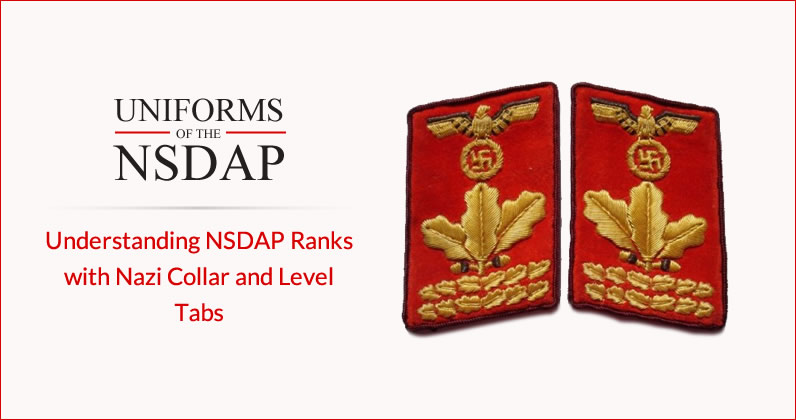The primary motivation behind the Nazi Party political positions or ranks was to give election locale authority positions amid the years where the Nazis were endeavoring to come to control in Germany. After 1933, when the Third Reich had been set up, Nazi Party positions played a substantially more essential job existing as a political hierarchy of leadership working next to each other with the German government.
The main formal Nazi Party rank and symbol directions were distributed in 1930 in spite of the fact that institutionalization over the Nazi Party did not happen until 1932. The Nazi Party paramilitary gatherings, for example, the SA and SS, likewise at this point had their very own uniform as well as badge regulations separate from the primary Nazi Party.
The formal Nazi Party ranks were:
1. Blockleiter (Block Leader)
2. Zellenleiter (Cell Leader)
3. Ortsgruppenleiter (Local Group Leader)
4. Kreisleiter (County Leader)
5. Gauleiter (Regional Leader)
6. Landesinspekteur (State Inspector)
7. Reichsinspekteur (National Inspector)
A higher position of National Organizational Leader was made for the senior most Reich Inspector of the Nazi Party. The unique position did not involve any extra badge other than that ragged by the ordinary Reichsinspekteur rank.
In 1933, the Nazi Party took national power in Germany and started a procedure known as Gleichschaltung to totally consolidate the non-military personnel administration of Germany with the political authority of Nazi Germany.
After the Night of the Long Knives in 1934, the Nazi Party experienced a noteworthy redesign as a prelude to Nazi authority individuals mixing their own positions with state, local and central government establishments. The initial phase in this procedure was to separate the Nazi Party into a few "levels", which were intended to act freely from one another.
These levels were:
1. Ortsgruppen (Local level – German towns and cities)
2. Kreisleitung (District level – German counties)
3. Gauleitung (Regional level – German states and their provinces)
4. Reichsleitung (National level – German nation)
In each level of the Party, there was a top on the most noteworthy conceivable position one could accomplish. The leaders of the lower levels, the Ortsgruppenleiter and the Kreisleiter, now held standard Nazi Party positions notwithstanding their leadership titles. The places of Gauleiter and Reichsleiter held their own extraordinary emblem and these two positions were considered outside the advanced level and were accessible just by direct appointment from Hitler.
Gauleiters and Reichsleiters additionally outranked all other Party individuals, paying little mind to standard Nazi Party positions.
Along these lines, the most noteworthy conceivable position in each dimension of the Party was as per the following:
Party Level
1. Ortsgruppen
2. Kreisleitung
3. Gauleitung
4. Reichsleitung
Rank Tab Color
1. Light Yellow
2. Dark Brown
3. Orange
4. Dark Red
Highest Rank in Tier
1. Oberabschnittsleiter
2. Dienstleiter
3. Oberbefehlsleiter
4. Hauptbefehlsleiter
Translation
1.Senior Section Leader
2. Service Leader
3. Senior Command Leader
4. Head Command Leader



Leave A Comment